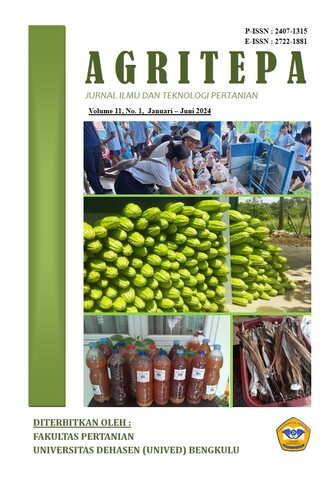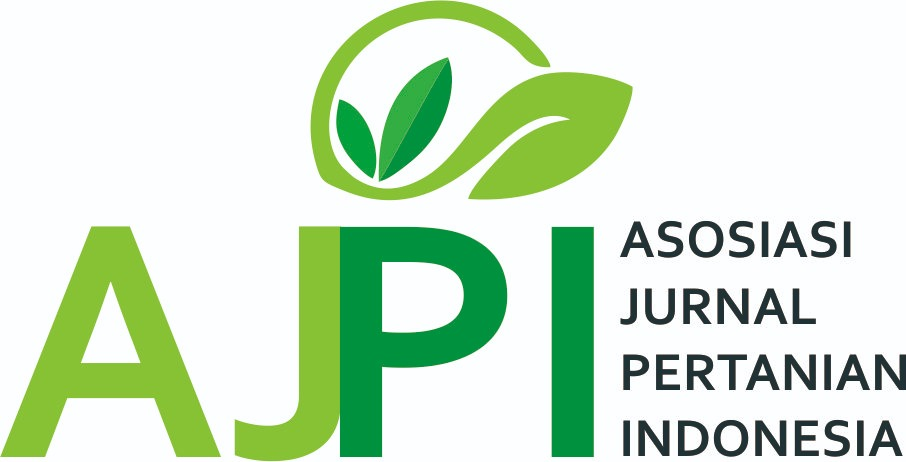Characteristics of CPO Extraction Results from Spinner Machine Test Capacity 15-45 Kg for Home Industrial Scale
Abstract
Purpose: This research aims to obtain the characteristics of CPO extraction results using a home industry spinner machine and determine the capacity of palm fruit suitable for CPO extraction using the spinner machine. Methodology: The spinner machine tested used a speed of 1800 rpm for 15 minutes, with capacity ratios of 15, 30, and 45 kg. The spinning process produces oil that will come out through the oil drain hole. Testing these three capacities will determine which one is more capable of producing CPO oil and is safe for engine rotation. Observing the characteristics of CPO involved yield tests, free fatty acid (FFA) tests, impurity content tests, and water content tests. Results: The yield test results ranged from 19.66% to 21.6%, the FFA test results ranged from 4.096% to 5.376%, the water content test results ranged from 0.2% to 0.6%, and the dirt content test results ranged from 2% to 5%. Findings: The 30 kg capacity was the most effective and efficient for CPO extraction using the home industry spinner machine. Novelty: The use of spinner machines in the home industry for CPO extraction has not been widely studied, and this research identifies the optimal capacity and efficiency of the spinner machine. Originality: This study provides new insights into the application of spinner machines for CPO extraction, highlighting their potential use in the home industry. Conclusions: The 30 kg capacity was the most effective and efficient for CPO extraction using the home industry spinner machine. Paper Type: Experimental Research Article
Keywords: CPO, Extraction, home industry, spinner
Downloads
References
BSN. (2006). Minyak kelapa sawit mentah (SNI 01-2901-2006). Standar Nasional Indonesia.
Choo, & Ong. (1985). Minor Consistuen of Palm Oil. Jurnal of The American Oil Chemists Society, 62(2), 237–240.
Daulay. (2018). Penentuan kadar air, kadar kotoran, dan kadar asam lemak bebas (ALB) dari inti sawit produk PTPN IV Medan. Universitas Sumatra Utara.
Erlangga. (2018). Perancangan Mesin Peniris Minyak (SPINNR) Unruk Kebutuhan Dapur Rumah Tangga dengan Mengunakan Metode TRIZ.
Ketaren. (2005). Minyak dan lemak pangan. Jakarta: Universitas Indonesia Press.
Kristono, & Nugroho. (2018). Analisa pengaruh steam injection terhadap overload continuous settling tank. Citra Widia Edukasi, X(1), 67–72.
Lukito, & Sudrajat. (2017). Pengaruh kerusakan buah kelapa sawit terhadap kandungan free fatty acid dan rendemen CPO di kebun talisayan 1 berau. Bul Agrohorti, 5(1), 37–44.
Prasetio, P. ., & Ibik, M. . (2015). Rancang bangun Kripik Mangga Podang Kapasitas 10 Kg Per Proses (Bagian: Mesin Peniris). Jurnal Teknik Mesin, 4, 1–25.
Putri, M. M. (2019). Kajian Ekstraksi Crude Palm Oil (CPO) Menggunakan Metode Wet Rendering Terhadap Perlakuan Suhu dan Lama Pemanasan. Universitas Bengkulu.
Saputra. (2018). Penetapan kadar asam lemak bebas pada minyak goreng. Katalisator, 2(2).
Sihombing, B. N. (2022). Perbandingan Jenis Ekstraksi Mekanis Dalam Pembuatan Crude Palm Oil (CPO). Universitas Bengkulu.
Sularso, K. . S. (2004). Dasar Perencanaan dan Pemilihan Elemen Mesin. Jakarta: Pradnya Pramita.
Copyright (c) 2024 Yazid Ismi Intara, Reza Jarot Widianto (Author); Bosman Sidebang Sidebang

This work is licensed under a Creative Commons Attribution-ShareAlike 4.0 International License.
Author retains the copyright and grants the journal the right of first publication of the work simultaneously licensed under the Creative Commons Attribution-ShareAlike 4.0 License that allows others to share the work with an acknowledgement of the work's authorship and initial publication in this journal













